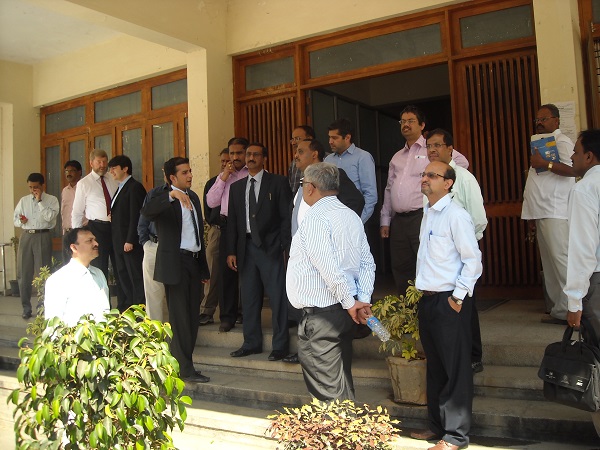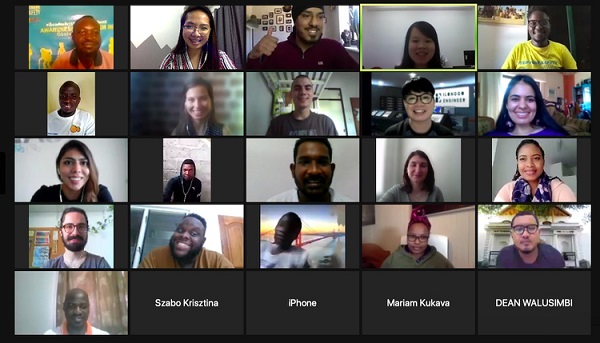





Stakeholder Engagement
It is vital that road systems meet the social and economic needs of communities as well as ensuring their safety. Engaging with stakeholders is an essential part of any project.
Stakeholder Engagement is the process of ensuring that everyone impacted by road building or rehabilitation project is consulted about how the project will affect their daily routine and safety, and gives them the opportunity to provide feedback.
Roads are not just for vehicles. Everyone affected by road projects should be involved. Stakeholder Engagement should reach out to residents, community groups, businesses, public services and others.
Stakeholder engagement Is a particular priority for road projects
Stakeholder engagement is especially important in road building or rehabilitation projects. Safe, accessible road infrastructure is better for local businesses, for tourism, for social development and for the economy. Too often deadly mistakes are made in road construction simply because local communities are forgotten in the hurry to build new, fast roads. From a construction point of view – making changes to a design during a project may cause delays and extra costs. It is better and more cost-effective to ensure community needs are understood and met before starting work. More importantly, not taking into account the needs of the community endangers local people and can cost lives and cause injuries.
Who are stakeholders?
Stakeholders are everyone who is impacted by a project. The exact list will depend on the local community. Project leaders should work with communities to develop a Stakeholder Map. This is likely to include:
- Residents
- Local businesses – including small businesses, shops, and markets as well as informal business owners such as street vendors
- Community groups
- Public transport providers and users
- Public services such as schools and hospitals
- Emergency Services
- Farmers – especially those with livestock
Stakeholder engagement involves pro-actively reaching out to consult with your stakeholders, paying special attention to groups that may not always be heard such as women, children and young people, the elderly, people with disabilities and other poor or marginalised groups.
Why consult?
It is vital that projects meet the social and economic needs of communities as well as ensuring their safety. This can only be achieved if you understand how the local community use and interact with the outcomes of the project.
For example in a road building project, questions that should be asked include:
- Who is accessing the road and why?
- Where do they need and want to go?
- What routes do they take?
- Where do they need to cross the road?
- What are their access needs?
- How do you ensure access to, and for, businesses? For staff, customers and deliveries.
- What are the routes to school or other key facilities and services?
- How do you ensure safe road use for farm vehicles and safe crossing for livestock?
- How do you ensure safe and rapid access for emergency services?
- Is the road and surrounding community accessible for all?
- Are there negative social or economic impacts of the road and how can these be avoided or mitigated?
When is stakeholder engagement needed?
There should be a plan for stakeholder engagement throughout a project. Stakeholder engagement should be undertaken before, during and after the project implementation. Stakeholder mapping and community involvement at every stage will enable this.
How to undertake stakeholder engagement?
The main steps are to:
- Identify the stakeholders and how best to communicate with them
- Reach out to them and listen
- Communicate meaningfully and effectively
- Use language people understand
- Make it easy to complain
Stakeholder engagement needs to be proactive. Communication should be easy-to-understand, providing communities with information written in non-technical language with clear maps and diagrams.
It is vital to reach out to communities – including hard to reach groups – and record their views. A range of communication techniques can be used including workplace meetings, engaging with existing forums and pop-up information sessions (for example, in local shopping centres), as well as public meetings in the community. It is important to ensure people are aware of the development, their opportunity to give feedback, and how they can make their voices heard.
It should be easy for people to participate. Consider the best way of reaching different groups. This includes ensuring accessible locations for meetings and that the time of day is convenient for your target audience. Different approaches will be needed for different audiences.
Communities, when consulted in the right way, will engage. If the community are not engaging or there is little feedback – the process is not accessible enough and costly mistakes may be made.
It is also valuable for communities to be prepared for engagement. The Good Practice Guide: Meaningful NGO Participation is a practical resource for NGOs and other civil society advocates, describing steps that they can take to position themselves more effectively with their governments and to get their voices included in decision making.
Responding to Stakeholder Engagement
It is important to listen to the feedback given by stakeholders and address their concerns. There should be clear processes to monitor issues raised and responses given. There should be a mechanism to ensure a constructive dialogue to find solutions to community concerns, and systems in place to ensure that commitments to the community are acted upon.
The Benefits of Stakeholder Engagement
Good stakeholder engagement will save time, money, and avoid dangerous mistakes – but most importantly will protect communities, save lives and prevent injuries.
Related Images
 Discussions with stakeholders in India. Image credit: iRAP
Discussions with stakeholders in India. Image credit: iRAP Consultations with a local NGO on school safety in Hong Kong. Image credit: Greg Smith
Consultations with a local NGO on school safety in Hong Kong. Image credit: Greg Smith Youth Stars programme. Image credit: YOURS
Youth Stars programme. Image credit: YOURS Youth involved in safer street participatory design in Indonesia. Image credit: Global Youth Coalition for Road Safety
Youth involved in safer street participatory design in Indonesia. Image credit: Global Youth Coalition for Road Safety








